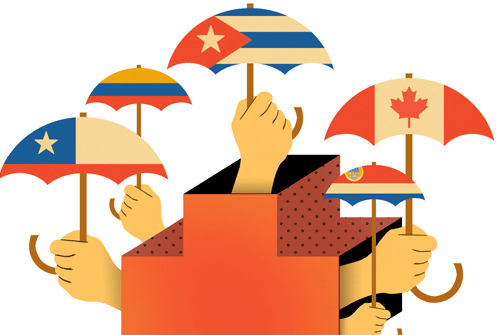Earlier this year, the U.S. Congress passed a landmark health care reform bill that broadened access to health insurance for millions of Americans. Even as U.S. pundits and politicians continue to argue about the meaning and the scope of the bill, many other countries in the region might reasonably wonder what the fuss is all about. At least seven countries in the Americas already have universal health coverage or something close to it, offering lessons for the region, including the U.S.
Nevertheless, inequities in access to and quality of care continue across the region. Examining the different national paths taken toward universal health care can shed light on how those systems work now—and on what steps might be necessary to improve them, so that they can serve as instructive models for other countries in the region.
The processes that affect the evolution of different universal health care systems range from the political to the sociological and geographical. What follows is a snapshot view of five of the hemisphere’s leading universal health care systems and the variations between them: Canada, Chile, Colombia, Costa Rica, and Cuba. The fact that each of the universal health care models analyzed occurs in a country whose name starts with “C” is a coincidence.
First, it is important to establish the commonalities of the universal health systems and where they are likely to differ. All of the region’s universal health care systems, as with insurance coverage in general, cover individual or personal health services while excluding certain public health functions such as the regulation of providers, practices and medications and the provision of health-related services that in principle apply to the whole population. These functions are always the responsibility of a ministry of health. When coverage is incomplete, it is usually because of the difficulty of reaching remote geographic areas or minority groups that differ culturally or linguistically from the rest of the population.
In practice, universal coverage varies in some important dimensions. While every person (citizen, resident or some other definition) may be covered, this is not necessarily true of every possible medical service. Moreover, it may be nearly impossible to extend formal coverage to every member of a national population. Nomads, homeless people and remote indigenous populations may always represent an ill-defined residual responsibility of a ministry of health or of charitable agencies or require special programs to reach them. So long as such marginal groups are small, coverage can still be regarded as universal. Coverage can also be called “universal” when the coverage of services differs among people but there is a common minimum to which everyone is entitled. National governments in the Americas have made distinct choices of whom to cover for what services, in different sequences, at different speeds—and with different results…





